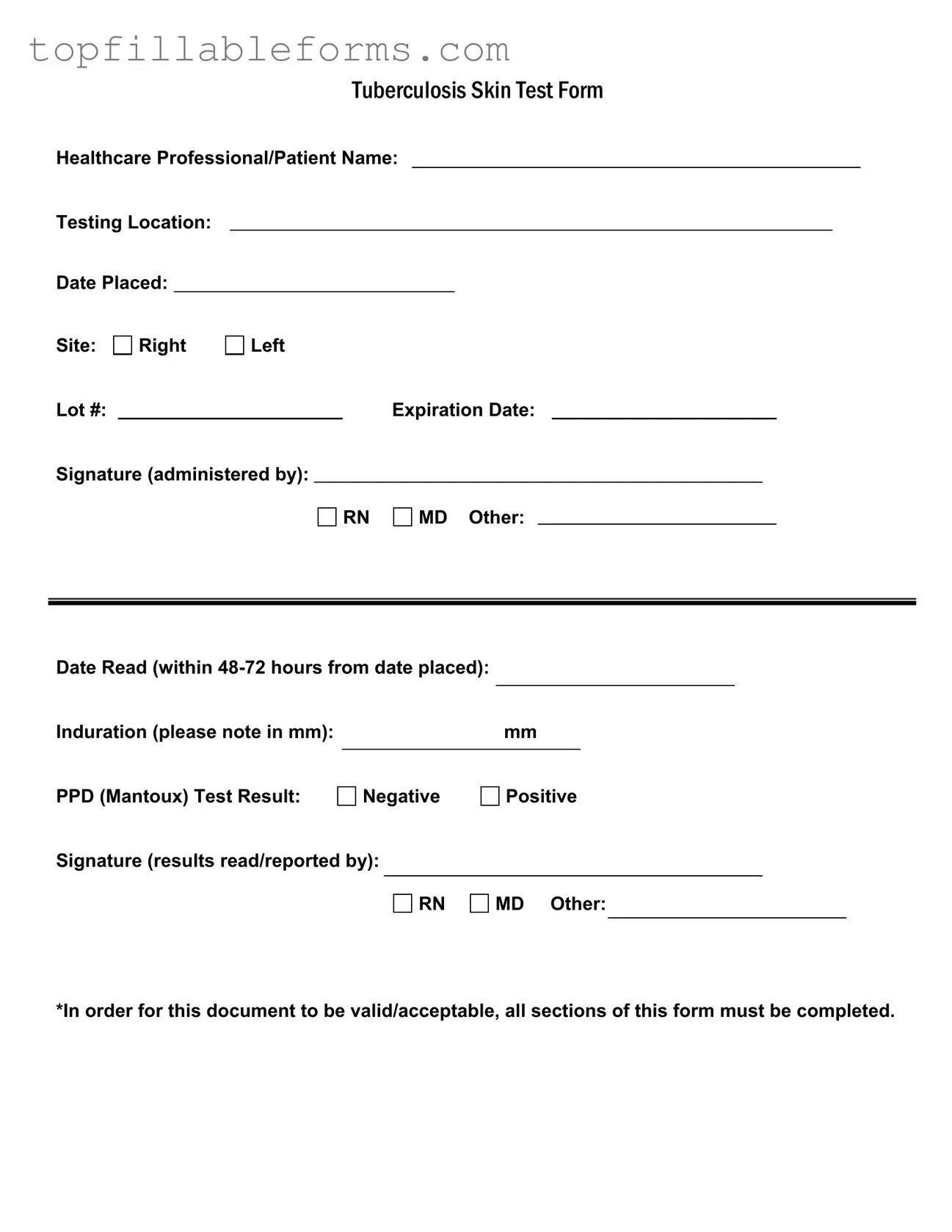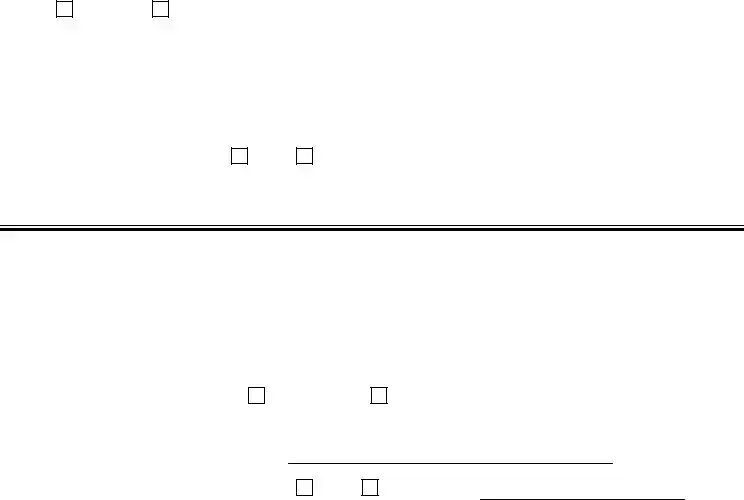Printable Tb Test Form in PDF
The Tuberculosis Skin Test Form is a crucial document used to record the administration and results of a tuberculosis (TB) skin test, commonly known as the PPD (Mantoux) test. This form captures essential information, including the healthcare professional's details, testing location, and the test results. Completing all sections of this form is necessary for it to be valid and acceptable.
Open Tb Test Editor Here

